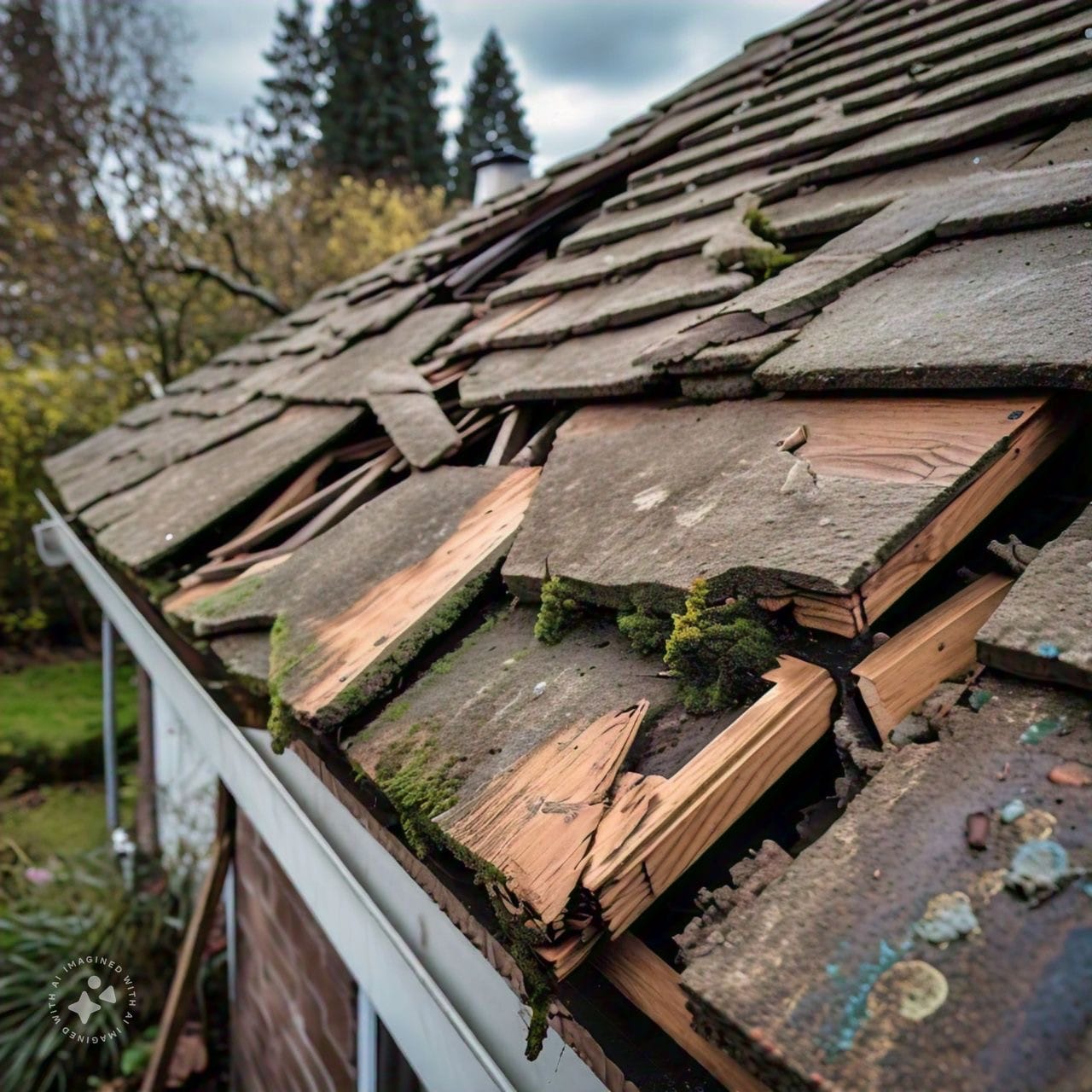A roof is one of the most critical components of a home, protecting it from the elements and ensuring the safety of its occupants. However, over time, roofs can experience wear and tear due to weather conditions, age, and other factors. Early on, identifying signs of roof damage can prevent small issues from developing into larger, more expensive problems. Homeowners must be vigilant in inspecting their roofs and understanding the warning signs of damage. The Orlando office of your local roofing company can provide valuable assistance in evaluating and addressing these issues before they escalate. We will explore how to identify signs of roof damage before it becomes a bigger problem by focusing on visual cues, structural issues, and interior damage.
Ways to identify signs of roof damage
- Inspecting for Missing or Damaged Shingles
One of the most obvious signs of roof damage is missing or damaged shingles. Shingles are designed to protect the roof’s underlayment from moisture and UV rays. When shingles are cracked, curled, or missing, they leave the roof vulnerable to water infiltration, which can cause leaks and other serious issues. Homeowners should regularly inspect their roofs, especially after severe weather events like storms or high winds, to ensure that shingles are intact.
In addition to missing shingles, homeowners should also look for shingles that appear buckled, blistered, or warped. These are early signs that the roof’s protective barrier is compromised. A buildup of granules from asphalt shingles in the gutters is another indicator of shingle wear. By addressing damaged or missing shingles early, homeowners can prevent water damage and prolong the life of their roofs.
- Checking for Roof Leaks
Roof leaks are one of the most common indicators of roof damage, and if not addressed promptly, they can lead to significant structural problems. Leaks can develop due to several factors, including damaged flashing, cracked shingles, or clogged gutters. Signs of a roof leak include water stains on ceilings or walls, damp spots in the attic, and a musty odor inside the home.
To prevent roof leaks from becoming a larger issue, homeowners should inspect the roof’s flashing, which seals roof penetrations such as chimneys, vents, and skylights. Damaged or improperly installed flashing is a common cause of leaks. Clogged gutters can also prevent water from draining off the roof properly, leading to pooling water seeping into the roof structure. Regularly cleaning gutters and inspecting roof seals can help prevent leaks and the subsequent damage they cause.
- Examining the Attic for Signs of Damage
The attic can be a valuable place to check for signs of roof damage. If there are issues with the roof, they may first become evident in the attic. Homeowners should look for signs of water infiltration, such as wet insulation, mold growth, or visible water stains on the rafters or ceiling. Dampness in the attic is a clear sign that water is entering the home, potentially through a compromised roof.
Poor ventilation in the attic can also contribute to roof damage. Without proper airflow, heat and moisture can become trapped, leading to the warping of roof materials or mold development. Checking for adequate ventilation, such as soffit vents and ridge vents, can help prevent heat and moisture buildup, which, in turn, helps extend the roof’s life.
- Noticing Sagging or Structural Issues
Another important sign of potential roof damage is sagging or uneven roof sections. A sagging roof often indicates a problem with the roof’s structural integrity, which may result from prolonged exposure to moisture, rotting wood, or even excessive snow or ice buildup. If not addressed promptly, this can lead to serious structural problems.
When inspecting for sagging, homeowners should look for dips or valleys in the roofline, visible from the ground. Inside the home, signs of sagging may include uneven ceilings or cracks in the walls, which suggest that the roof may be putting pressure on the home’s structure. Catching these issues early can prevent a collapse and protect the overall integrity of the building.
- Observing Signs of Mold or Algae Growth
Mold, moss, and algae growth on a roof can be more than an aesthetic issue. These organisms thrive in moist environments, and their presence often indicates that the roof is not draining water properly. Over time, mold and algae can break down roofing materials, leading to leaks and structural damage. If left unchecked, moss can lift shingles away from the roof, allowing water to penetrate beneath the surface.
Homeowners should regularly inspect their roofs for signs of dark streaks, green patches, or other discolorations that suggest mold or algae growth. Cleaning the roof to remove these growths and ensuring that it is well-ventilated and dry can prevent further damage. Additionally, installing zinc or copper strips on the roof can help prevent the regrowth of moss and algae.
- Watching for High Energy Bills
While it may not seem immediately related to roof damage, a sudden increase in energy bills can signal that the roof is no longer functioning as it should. A poor roof may allow warm or cool air to escape from the home, forcing the HVAC system to work harder to maintain a comfortable temperature. This can result in higher heating and cooling costs.
If homeowners notice that their energy bills are climbing without a clear explanation, it may be worth inspecting the roof for damage or leaks. Ensuring the roof is well-insulated and has no gaps in the roofing materials can help reduce energy loss and keep utility bills in check.
Identifying signs of roof damage early is essential for preventing more serious and costly problems. Homeowners can avoid potential issues and address them before they escalate by regularly inspecting for missing shingles, roof leaks, attic damage, structural issues, and mold growth. Additionally, paying attention to changes in energy bills can provide clues about the roof’s condition. Regular maintenance and vigilance can prolong the roof’s life, protect the home from water and structural damage, and save homeowners from expensive repairs in the future.

















